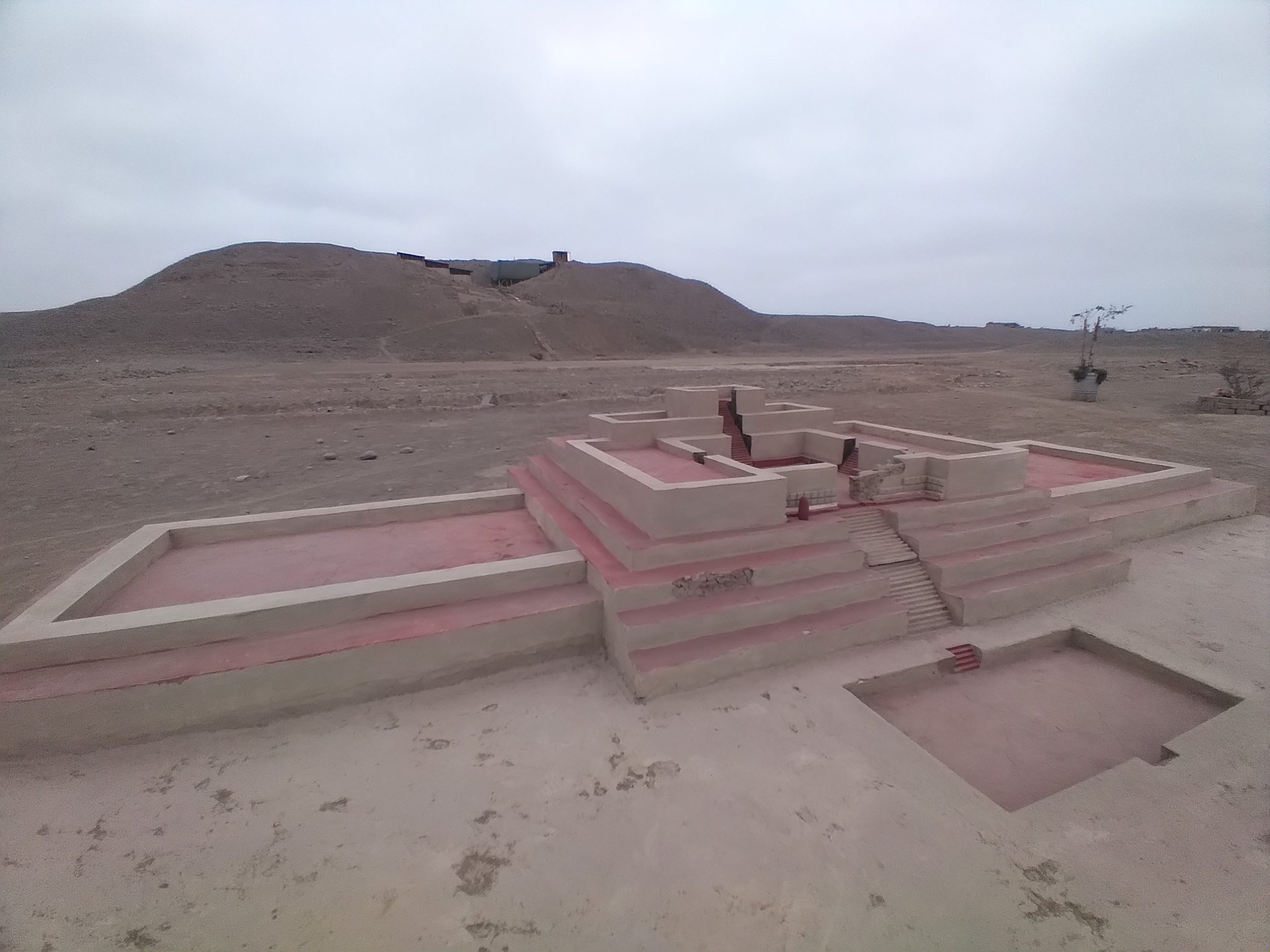Latin America
Related: About this forum1,000-year-old mummy with full head of hair and intact jaw found in Peru
The remains were discovered in the middle of a modern neighborhood in Lima.
By Laura Baisas
Posted On Sep 8, 2023 8:00 AM EDT
A team of archaeologists have unearthed a roughly 1,000 year-old mummy with well-preserved brown hair in Peru’s capital city of Lima. The mummified remains were found alongside preserved textiles, ceramic vessels, and other objects at the Huaca Pucllana monument, a 82-foot tall clay pyramid with an archaeological site hidden inside of a ceremonial grave.
. . .
Long before the Incas built their mountaintop royal retreat Machu Picchu or Spanish colonizers first arrived around 1527, Peru was home to multiple thriving pre-Hispanic cultures, including the Ychsma people. Huaca Pucllana was built by the Ychsma around 500 CE and is the heart of present-day Lima’s Miraflores district. It’s believed that the Ychsma used it as a cemetery. The Ychsma people are credited with building at least 16 pyramids, some of which are older than Egypt’s pyramids by about 4,000 years. The irrigation experts dominated the central coast of Peru until it was absorbed by the Inca empire around roughly 1468. The mummified remains themselves can be traced back about 1000 CE.
Earlier this year, researchers discovered a similar mummy believed to be close to 3,000 years old in Lima. This mummy’s skull also had intact hair that was found inside of a cotton bundle before the rest of the remains were uncovered. That mummy is believed to be from the Manchay culture, which developed between 1500 and 1000 BC in Lima’s valleys. The Manchay are associated with the construction of temples built in a U-shape that pointed toward the sunrise, according to Reuters.
https://www.popsci.com/science/peru-mummy-hair/
~ ~ ~

U-SHAPED TEMPLES IN PERU’S CENTRAL COAST
According to Richard Burger, the U-Shaped temples of the Rimac and Lurin Valleys of the central coast display enough similarities to think of them as belonging to a single culture. He named this culture the Manchay Culture, after one of the central coast sites. The main feature of these ceremonial centers is the U-shaped arrangement of the buildings, where a taller structure stands at the center and is flanked by two lower platforms that make the “arms” of the U. These structures enclose an open, rectangular plaza. On the main structure, there is a central stairway that connects the plaza to an atrium on the upper portion of the structure. Buildings were modified and enlarged, but appear to have retained the same basic layout.
On this aerial photo of Garagay you can see the basic layout of the U-Shaped temple at the site. As you can see, though, there has been quite a bit of recent urban sprawl around the site. Unfortunately, as a result of the easy access to this site, there has been a lot of destruction of the polychromed reliefs on this building.
More:
https://www.andeanarts.org/ushaped-temples-in-perus-central-coast
~ ~ ~
https://thebrainchamber.com/wp-content/uploadGaragay
Posted on March 21, 2024
The Archaeological Site of Garagay: A Ceremonial Center of the Andean Formative Era
Garagay is an archaeological site of significant importance located in the district of San Martín de Porres, within the city of Lima, Peru. This site, dating back to approximately 1400 BC, represents a key ceremonial center from the Andean Formative era, showcasing the architectural and cultural developments of ancient societies in the region.s/Garagay-4.jpg
Location and Historical Context
Situated near the intersection of Angélica Gamarra and Universitaria avenues, Garagay lies within an area formerly known as the “Garagay Alto” Hacienda, owned by the Valle family. The site is positioned in the valley of the Rímac River, a location that underscores its significance within the ancient Andean landscape.
Architectural Features
Garagay comprises three large terraced structures arranged in a U shape, a characteristic architectural style of the period. These structures are built around a large esplanade, open to the northeast, reflecting the ceremonial and communal functions of the site. The most notable feature of Garagay is its clay high-reliefs in the style of the Chavín Culture, depicting deities with feline features. These reliefs, found on a pilaster in the ceremonial atrium, highlight the religious and mythological significance of the site.

Chronology and Cultural Significance
Radiocarbon dating places the construction of Garagay around 1400 BC, with the site remaining active until approximately 600 BC. This period corresponds to the Middle and Higher Formative periods of Andean civilization. Garagay underwent three major renovations during its use, indicating its long-standing importance and evolving architectural styles.
The site’s iconography, particularly the depiction of gods with feline features, reflects the fears and beliefs of agricultural societies regarding supernatural forces. Garagay’s architectural tradition, especially the U-shaped temples, suggests the presence of a priestly caste that wielded power through the control of production means.
More:
https://thebrainchamber.com/garagay/
yourout
(8,280 posts)By the time I was 25 it was pretty much gone.
Zambero
(9,814 posts)Was wondering if the recently liberated mummy has divulged the secret to keeping a full head of hair for an entire millennium?